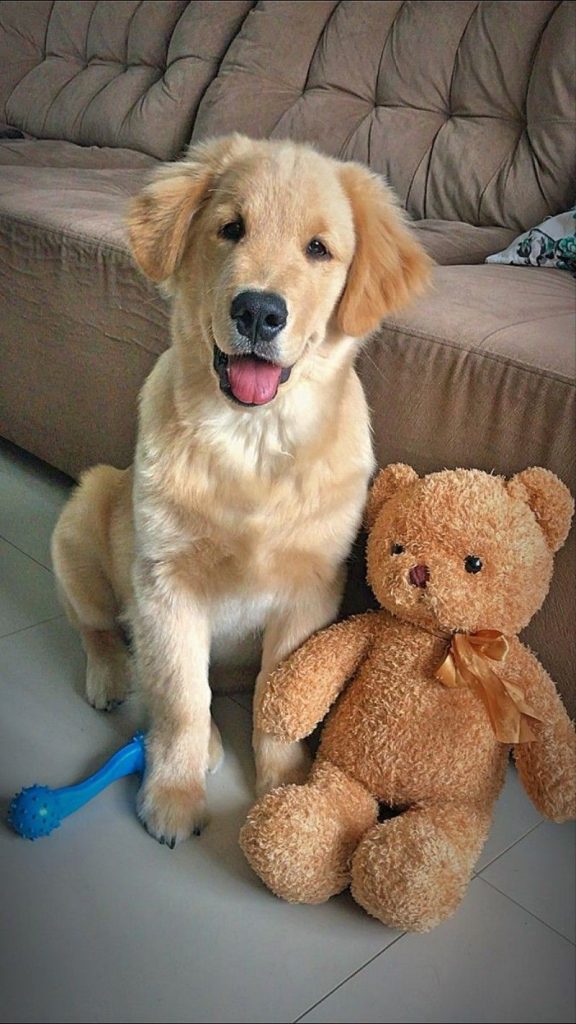Hey there, fellow pet lovers! If you’ve ever found yourself wandering the aisles of pet stores, overwhelmed by the vast array of puppy toys, you’re not alone. Choosing the perfect toy for your furry friend can feel like a daunting task, but fear not! I’ve got some valuable insights to help you navigate the world of puppy home toys. Let’s dive into the nitty-gritty of what makes a toy truly great for your little companion.
The Ultimate Guide to Choosing the Perfect Puppy Home Toy
Navigating the world of puppy toys can be overwhelming, especially when you want to find the perfect one for your new furry friend. A puppy home toy isn’t just a plaything; it’s an essential tool for nurturing your pup’s development, ensuring they stay entertained, and providing a safe outlet for their energy. Here’s a comprehensive guide to help you choose the perfect puppy home toy.
Understanding Your Puppy’s Needs
Before diving into the specifics of different toys, it’s crucial to understand your puppy’s size, breed, and energy level. Larger breeds may require sturdier toys, while smaller dogs might enjoy more delicate and compact playthings. Similarly, a high-energy puppy will need toys that can withstand rigorous play, while a more laid-back pup might appreciate gentler, interactive toys.
Types of Puppy Home Toys
There’s a vast array of puppy home toys available, each designed to cater to different aspects of your pet’s life. From chew toys that help soothe teething gums to puzzle toys that stimulate cognitive development, here’s a rundown of the most popular types:
-
Chew Toys: These are a must-have for puppies as they help with teething and can alleviate the pain associated with growing teeth. Look for toys made from durable materials like rubber or rope that can withstand rigorous chewing.
-
Interactive Toys: These toys engage your puppy’s mind and body. They come in various forms, such as puzzle toys that hide treats or balls with hidden compartments. Interactive play can be incredibly beneficial for your puppy’s mental health.
-
Soft Toys: While not ideal for heavy-duty chewing, soft toys can be perfect for cuddling or gentle play. They’re especially good for puppies that are prone to destructive chewing but still need something to gnaw on.
-
Rackets and Balls: Toys like these encourage fetch and tug-of-war games, which are excellent for exercise and bonding. They can also be used in training exercises to teach your puppy commands.
Durability and Safety
When selecting a puppy home toy, always consider the durability and safety. Look for toys that are made from non-toxic materials and are free of small parts that could be easily swallowed. For chew toys, ensure they are sturdy enough to withstand the pressures of a puppy’s sharp teeth.
Size Matters
The size of the toy is equally important. A toy that’s too small can be a choking hazard, while one that’s too large might not be suitable for your puppy’s play style. Toys should be big enough so that they can’t be easily swallowed or torn apart, but small enough to hold your puppy’s interest.
Material Matters
The material of the toy can significantly impact its durability and your puppy’s health. Natural materials like wood and rope can be great for gentle chewing, while synthetic materials like rubber are often more durable. Always check for any sharp edges or small pieces that could pose a risk.
Customization for Your Puppy
Every puppy is unique, so consider what your pup enjoys most. Some dogs love the sound of crinkling paper, while others might be fascinated by the movement of a laser pointer. Tailoring the toy to your puppy’s preferences can make playtime more enjoyable for both of you.
Sustainability and Eco-Friendly Options
In recent years, there’s been a growing awareness of sustainability and eco-friendliness. When shopping for puppy home toys, look for brands that offer eco-friendly options made from recycled materials or natural resources. These toys not only help the environment but can also be just as durable and fun for your furry friend.
Real-World Reviews
One of the best ways to find the perfect toy is to read reviews from other pet owners. Look for toys that have been praised for their longevity and the positive impact they’ve had on a puppy’s behavior and health. Sometimes, the best products are those that have stood the test of time with multiple satisfied customers.
Conclusion
Choosing the perfect puppy home toy is about finding the right balance between fun, safety, and your pup’s specific needs. By considering the type of toy, its durability, safety, size, material, and your puppy’s personal preferences, you’ll be well on your way to providing your furry friend with the perfect play companion. Remember, a happy puppy is a healthy puppy, and a well-chosen toy can be a key part of that equation.

Why a Puppy Home Toy is Essential for Your Furry Friend
Puppies are more than just cute companions; they are bundles of energy and curiosity, always on the move and eager to explore their world. One of the most vital elements in a puppy’s life is the right toys, and among them, the puppy home toy stands out as a cornerstone of their development. Here’s why a well-chosen puppy home toy is not just beneficial but essential for your furry friend:
Endless Hours of EntertainmentImagine a world filled with endless possibilities, where every object is new and exciting. This is the reality for a puppy. A high-quality home toy can provide your puppy with hours of entertainment, helping to ward off boredom and destructive behaviors that can arise from lack of stimulation.
Stimulating Cognitive GrowthPuppies are like sponges, soaking up new information and experiences at a rapid pace. Toys designed to challenge their minds, such as puzzle toys or interactive treat dispensers, can stimulate cognitive growth. This cognitive engagement can help improve problem-solving skills and mental acuity, making your puppy smarter and more capable.
Physical ExercisePuppies are naturally active, and it’s crucial to provide them with physical exercise to maintain a healthy weight and muscle tone. A sturdy home toy that encourages playtime can help with this. Whether it’s a tug-of-war rope, a frisbee, or a ball, these toys can encourage your puppy to move, run, and jump, which is vital for their physical development.
SocializationSocialization is key to a puppy’s well-being. By interacting with toys, puppies can learn to be independent and self-assured. Toys that mimic other pets or humans can help simulate social interactions, teaching your puppy how to behave and interact appropriately with their environment.
Preventing Behavioral IssuesUnoccupied puppies can turn to unwanted behaviors like excessive barking, digging, or chewing on furniture. Providing them with appropriate toys can redirect these behaviors, ensuring that your home remains intact and your furniture safe from puppy teeth.
Encouraging Natural InstinctsDogs are descendants of wild canines, and many of their instincts are still present today. Toys that allow them to express their natural hunting and retrieving instincts can be incredibly satisfying. A plush toy that resembles a prey animal or a ball that they can chase are perfect for this.
Bonding with Your PuppyToys can be more than just a source of fun; they can be a tool for bonding. Spend time playing with your puppy, and you’ll find that the bond between you can grow even stronger. This shared playtime can create lasting memories and deepen the connection you share.
Teaching MannersPlaying with toys can also be a way to teach your puppy good manners. You can use toys as a reward for good behavior, such as waiting calmly for their food or not jumping on guests. This positive reinforcement can help shape your puppy’s behavior in a positive and constructive manner.
Longevity of ToysA good puppy home toy is not just a one-time purchase; it’s an investment in your puppy’s future. Quality toys can last for years, providing endless entertainment and value. They can be passed down to younger siblings or even used as enrichment for older dogs with arthritis or mobility issues.
Supporting Emotional Well-beingPuppies can experience stress, anxiety, and fear just like humans. A comforting home toy can be a source of emotional support, offering a sense of security and comfort during times of distress. Whether it’s a plush toy to cuddle with or a toy that helps soothe their teeth while teething, these items can greatly improve their emotional health.
In conclusion, a puppy home toy is not just a plaything; it’s a multifaceted tool that supports your puppy’s overall well-being. From providing entertainment and exercise to fostering cognitive and social development, the right toy can have a profound impact on your furry friend’s life. So, when selecting a puppy home toy, think of it as an essential component of your puppy’s care, one that will bring joy, growth, and companionship for years to come.
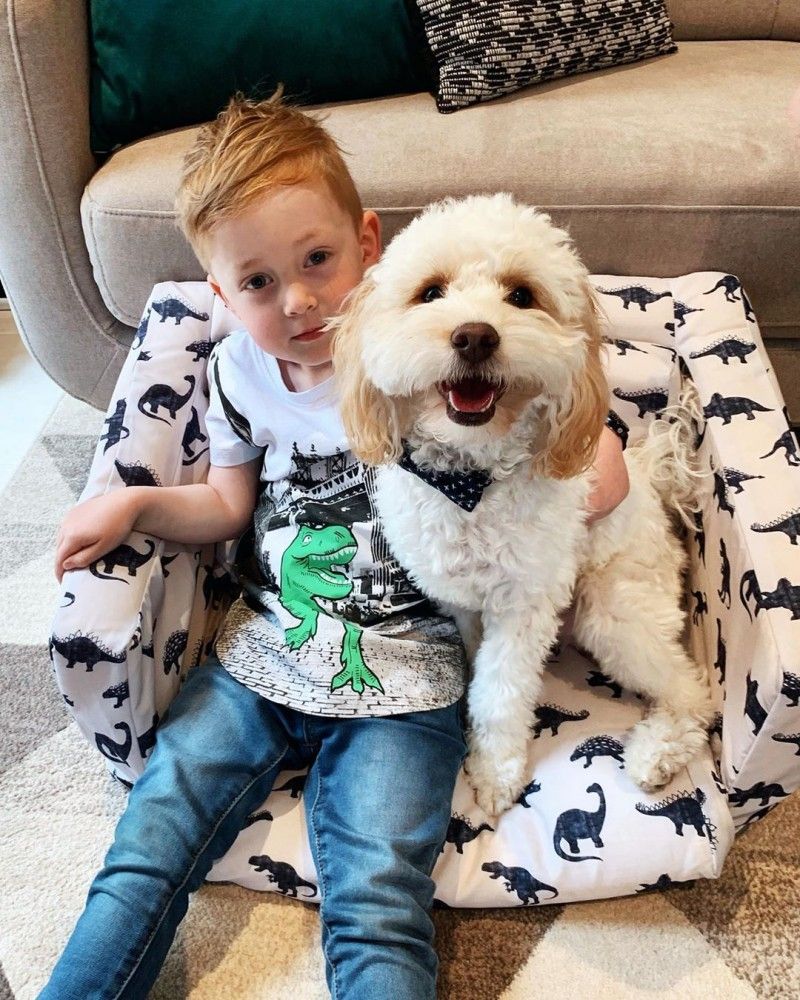
Top Features to Look for in a High-Quality Puppy Toy
When selecting the perfect puppy home toy, there are several key features to consider that will ensure both your pup’s safety and enjoyment. Here’s what to keep an eye out for:
Material MattersThe choice of material is crucial. Opt for toys made from non-toxic, durable materials that can withstand rigorous play. Natural rubber is a great choice as it’s flexible, resilient, and easy to clean. Avoid any toy that contains harmful chemicals or small parts that could pose a choking hazard.
Size and ShapeEnsure the toy is appropriately sized for your puppy. It should be big enough so that they can’t swallow it, but not so large that they can’t carry it around or manipulate it. Consider the shape as well; a variety of shapes can stimulate different senses and encourage your puppy to explore and play in new ways.
Interactive ElementsInteractive toys can provide mental stimulation and help with your puppy’s development. Look for toys with buttons, beads, or crinkly surfaces that encourage your puppy to paw, chew, and investigate. These toys can help satisfy your puppy’s natural curiosity and prevent boredom.
Stress ReliefPuppies often use chewing as a way to relieve stress or teething pain. A high-quality chew toy should be designed to be resilient enough to withstand a lot of biting without breaking apart. Look for toys made from tough rubber or rope that can provide long-lasting relief for your teething pup.
Noisy ToysMany puppies are attracted to sounds, and a toy that makes noise can be a big hit. However, it’s important to ensure that the noise-making component is secure and cannot be easily dislodged or swallowed. A rattle or a toy with a jingling bell can be great for keeping your puppy entertained and engaged.
Ease of CleaningA good puppy toy is easy to clean, as they can get quite dirty with all the play. Toys that are machine washable or can be wiped down easily are a bonus. This not only helps to maintain hygiene but also extends the life of the toy.
Safety FeaturesAlways check for safety features like non-removable eyes and noses, which can be a choking hazard. Look for toys that have smooth edges and no sharp corners. Some toys come with safety certifications, which is an added layer of assurance that they have been thoroughly tested for durability and safety.
VersatilityA versatile toy can serve multiple purposes. For instance, a toy that can be filled with treats or kibble can encourage your puppy to play for longer as they work to get the treats out. A toy that can be used for tug-of-war or as a fetching game can offer both physical and mental exercise.
AromatherapySome toys are scented with calming essential oils or natural fragrances. These can help soothe your puppy during playtime, especially if they have anxiety or stress. However, it’s important to choose scents that are safe for your pet and not overpowering.
Age-AppropriatePuppies have different play needs at various stages of their development. Choose a toy that is suitable for your puppy’s age and energy level. For instance, a teething toy for a young pup may differ greatly from a puzzle toy for an older, more agile dog.
CustomizationConsider a toy that can be customized to suit your puppy’s preferences. Some toys come with interchangeable parts or different textures that you can mix and match to keep your puppy’s playtime fresh and exciting.
By focusing on these features, you can ensure that the puppy home toy you choose is not only fun and engaging but also safe and long-lasting. Remember, the right toy can make a huge difference in your puppy’s health, happiness, and overall well-being.
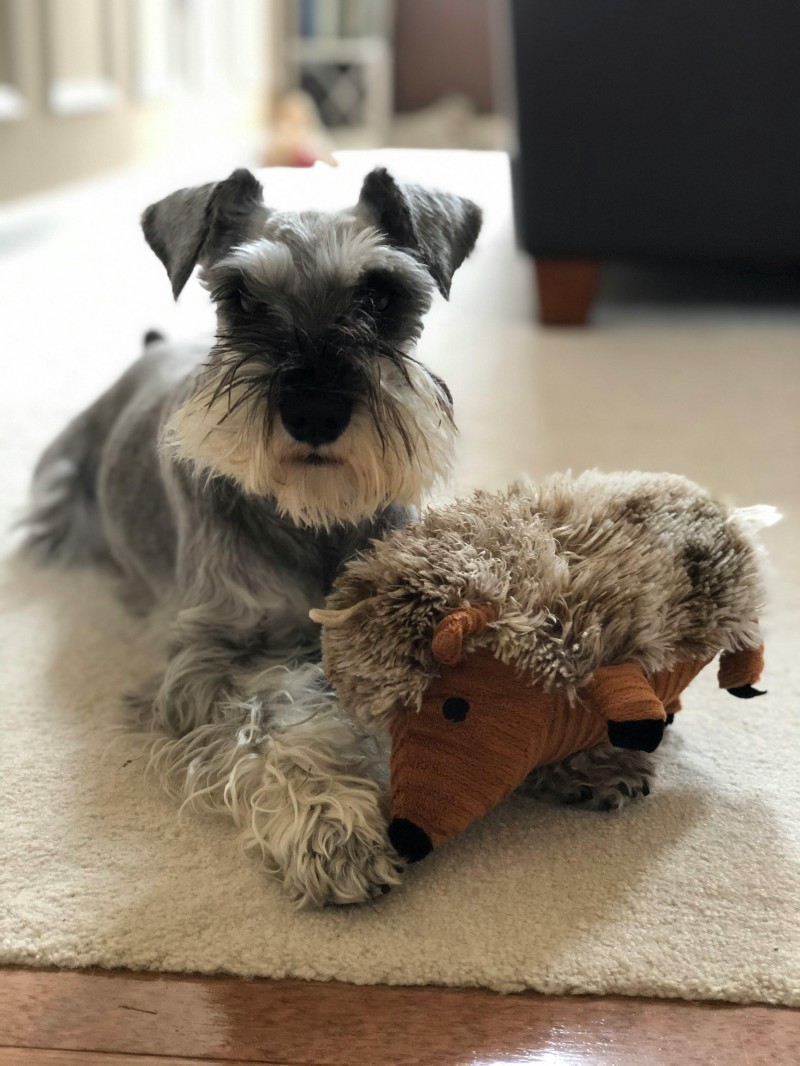
Interactive Play: Enhancing Your Puppy’s Cognitive Development
Interactive play is not just a fun activity for your puppy; it’s a vital tool for enhancing their cognitive development. Here’s a deeper look into how these engaging games can shape your furry friend’s mind.
1. Stimulating Problem-Solving SkillsPuppies are naturally curious creatures, and interactive toys tap into this innate curiosity to challenge their problem-solving abilities. By encouraging them to figure out how to get treats or toys out of a puzzle toy, you’re helping to develop their critical thinking skills. This mental workout can prevent boredom and keep your pup’s brain active and engaged.
2. Encouraging Independent PlayInteractive toys can be a lifesaver for busy pet parents. They provide your puppy with an outlet for play that doesn’t require constant supervision. This independent playtime allows your pup to explore their surroundings, learn about their own abilities, and develop a sense of self-reliance.
3. Boosting Memory and LearningMany interactive toys are designed to reinforce memory and learning. For example, toys that dispense treats when your puppy completes a task or sequence of actions can help reinforce what they’ve learned. This type of play can improve your puppy’s memory retention and make learning new commands or tricks easier in the future.
4. Reducing Hyperactivity and Excess EnergyPuppies are full of energy, and without proper outlets, this energy can manifest as hyperactivity or destructive behavior. Interactive play can help channel this excess energy into positive, constructive activities. By engaging in games that require focus and concentration, your puppy can burn off some of that energy and stay calm and content.
5. Strengthening Social SkillsWhile interactive toys are great for solo play, they can also be used to enhance social interactions. For instance, you can play fetch or tug-of-war with your puppy, which can help build trust and strengthen the bond between you. These games can also be a great way to introduce your puppy to other dogs, teaching them how to play appropriately and safely.
6. Encouraging Physical ExerciseInteractive play often involves physical activity, which is crucial for a puppy’s overall health. Games that require chasing, jumping, or carrying objects can help keep your puppy’s body in good shape. Regular physical exercise is not only beneficial for maintaining a healthy weight but also for preventing obesity and related health issues.
7. Enhancing Emotional Well-beingPuppies, like humans, can experience stress and anxiety. Interactive play can be a great way to help your puppy relax and reduce stress. The focus and engagement required by these toys can provide a mental break from the world, allowing your puppy to unwind and enjoy the moment.
8. Fostering Creative ExpressionInteractive toys can inspire your puppy’s creativity. Some toys are designed to mimic real-life scenarios, like tug-of-war with a rope that resembles a tug-of-war game with another dog. This can encourage your puppy to express themselves in new and imaginative ways.
9. Longevity of the ToyA high-quality interactive toy can last for years, providing countless hours of entertainment for your puppy. Investing in a durable and well-designed toy means you’re not just buying a single plaything but a long-term companion for your furry friend.
10. Customization for Your Puppy’s PreferencesInteractive toys come in a variety of shapes, sizes, and complexities, allowing you to choose one that suits your puppy’s preferences and play style. Whether your puppy enjoys hunting for treats, solving puzzles, or engaging in physical play, there’s an interactive toy out there to cater to their specific interests.
In conclusion, interactive play is a multifaceted tool that can significantly enhance your puppy’s cognitive development. By incorporating these toys into your puppy’s daily routine, you’re not just providing entertainment; you’re investing in their mental, emotional, and physical well-being.
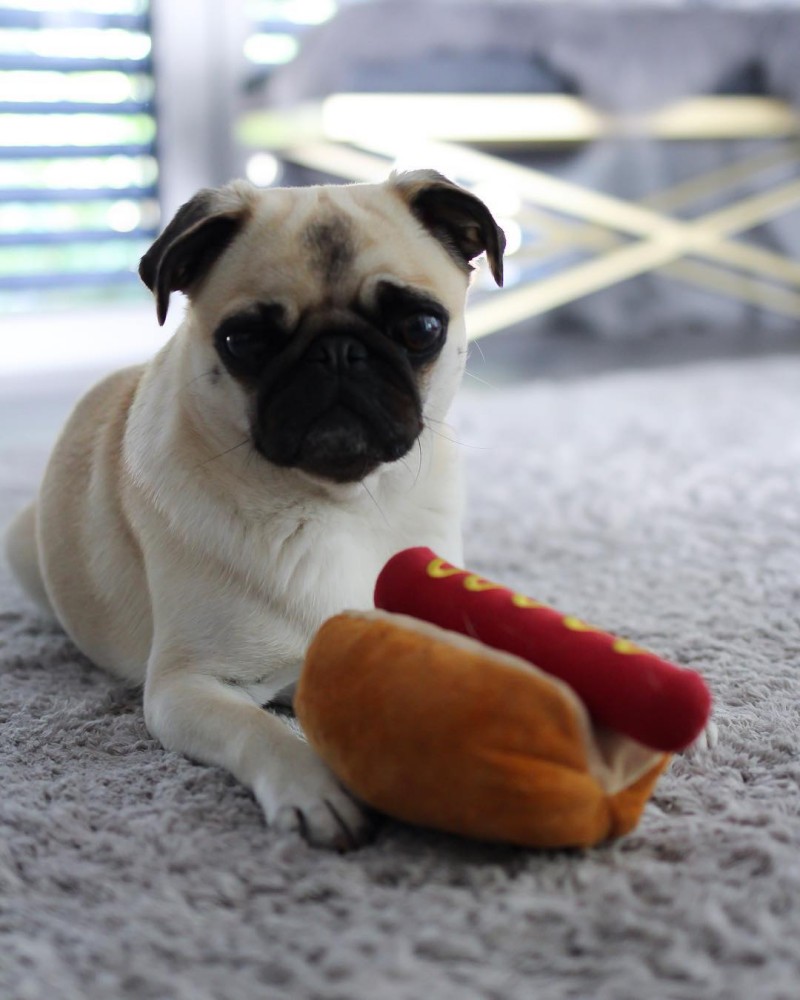
Safety First: Materials and Design That Protect Your Pup
When it comes to selecting a puppy toy, safety should be your top priority. The materials and design of a toy can significantly impact your furry friend’s well-being. Here are some key factors to consider:
Durability Over TimeA high-quality puppy toy is built to withstand the rigors of playtime. Look for toys made from robust materials like sturdy rubber or durable fabrics that can endure chewing, tugging, and even the occasional trip to the washing machine. Toys that last longer not only save you money in the long run but also ensure your puppy remains entertained.
Non-Toxic MaterialsThe health of your puppy is paramount. Always check that the toy is made from non-toxic materials. Avoid toys with paints or dyes that could chip off and be ingested, leading to internal harm. Opt for toys that are free from harmful chemicals like BPA and phthalates.
Securely Attached PartsPuppies are notorious for their chewing habits, which can lead to the dislodging of small parts. Ensure that all parts of the toy are securely fastened and that there are no loose buttons, beads, or strings that could come off and pose a choking hazard.
Easy to CleanPuppies are prone to drool and dirt, so a toy that’s easy to clean is essential. Look for toys with a smooth surface that can be easily wiped down or submerged in water. Toys that can be put in the dishwasher are a bonus, as they can be sanitized thoroughly.
Safe Edges and CornersSharp edges or corners can cause injury to your puppy’s mouth or teeth. Choose toys with rounded edges and soft corners to prevent any accidental cuts or abrasions.
Size and ShapeThe size and shape of the toy should be appropriate for your puppy’s breed, size, and chewing intensity. A toy that’s too small can be a choking hazard, while one that’s too large might not be engaging enough. Consider toys that are designed to mimic natural objects like bones, balls, or plush animals, which can stimulate your puppy’s natural instincts.
Water ResistanceSome puppies love to play in water, and a toy that’s water-resistant or even waterproof can be a great addition to your collection. Look for toys made from materials that won’t absorb water and can be used for both indoor and outdoor play.
Interactive ElementsWhile safety is crucial, interactive toys can also provide mental stimulation. Toys with squeakers, crinkly textures, or moving parts can engage your puppy’s senses and encourage play. However, ensure that these elements are well-secured and won’t easily come off.
Flavor and SmellMany puppies are attracted to the taste and smell of certain materials. Toys with a natural flavor or scent can be more appealing, but they should still be made from safe, non-toxic materials.
Toy VarietyOffering a variety of toys can help prevent boredom and provide different types of play. Some toys are great for fetch, others for tug-of-war, and still others for chewing. Having a mix can cater to your puppy’s different interests and keep their playtime diverse.
Eyes on the PrizeAlways supervise your puppy during play, especially when they’re trying out a new toy. This helps you monitor their reactions and ensure they’re not accidentally swallowing any small pieces.
In conclusion, when shopping for a high-quality puppy toy, consider the durability, materials, design, and safety features. By choosing wisely, you can provide your puppy with hours of safe, enjoyable playtime that also contributes to their overall well-being and cognitive development.
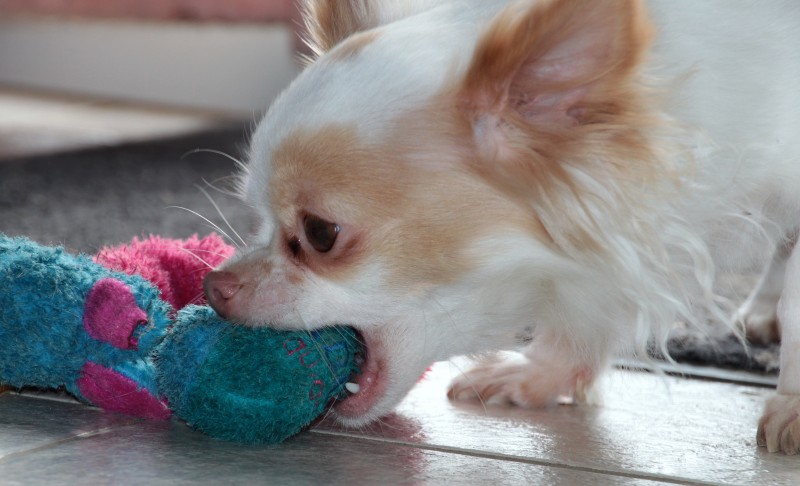
How to Introduce a New Puppy Home Toy to Your Pet
Introducing a new puppy home toy to your furry friend can be an exciting yet delicate process. Here are some tips to ensure a smooth transition and a fun experience for both of you:
Start with a Neutral EnvironmentWhen introducing a new toy, it’s best to do so in a space where your puppy feels comfortable and secure. This could be their usual play area or a quiet corner of the home where they don’t feel overwhelmed.
Choose the Right TimeTiming is crucial. Pick a moment when your puppy is calm and not overly excited or tired. Avoid introducing a new toy right after a vigorous play session or mealtime, as they might be too full or too energetic to focus.
Present the Toy CalmlyHold the toy in your hand and let your puppy approach it at their own pace. Avoid forcing them to interact with it, as this can create negative associations.
Encourage CuriosityEncourage your puppy’s natural curiosity by showing interest in the toy yourself. Pups often mimic their owners’ behaviors, so if you show enthusiasm, they’re more likely to do the same.
Use Positive ReinforcementWhen your puppy shows interest in the toy, reward them with praise, treats, or affection. This reinforces the idea that the toy is something to be enjoyed.
Allow for ExplorationLet your puppy sniff and explore the toy. This is their way of getting to know it and can help them feel more at ease.
Introduce Different Types of ToysOver time, introduce a variety of toys to keep things interesting. This can help prevent boredom and ensure your puppy stays engaged in play.
Monitor the InteractionWatch how your puppy interacts with the new toy. If they seem hesitant or uncomfortable, it might be a sign that the toy isn’t right for them. Look for toys that are appropriate for their size, chewing habits, and energy level.
Keep the Session ShortKeep the first few interactions with the new toy brief. This helps to avoid overwhelming your puppy and allows them to gradually become accustomed to the new item.
Be PatientIt’s important to be patient. Some puppies might take longer than others to warm up to a new toy. Avoid forcing the issue or getting frustrated; instead, try again another time.
Watch for Signs of DiscomfortPay attention to any signs of discomfort or aggression. If your puppy seems to be having a negative experience with the toy, it might not be the right fit. Safety should always be a priority.
Incorporate into RoutineOnce your puppy seems comfortable with the new toy, start to incorporate it into their regular play routine. This helps to solidify the toy as a positive part of their playtime.
Check for Wear and TearRegularly inspect the toy for any signs of wear and tear. Puppies can be quite rough with their toys, so it’s important to replace them when they become damaged to prevent any potential hazards.
Keep it FunRemember, the goal is to have fun with your puppy. The toy should be a source of joy and entertainment, not a source of stress or fear.
Seek Professional Advice if NeededIf you’re struggling to introduce a new toy or if your puppy seems particularly resistant, consider seeking advice from a professional dog trainer or behaviorist. They can provide personalized guidance based on your puppy’s specific needs.
By following these steps, you can help your puppy feel at ease with a new home toy, ensuring that both of you have a delightful and safe playtime experience.

The Benefits of a Variety of Toys for Your Puppy’s Playtime
Incorporating a variety of toys into your puppy’s playtime can have a profound impact on their development and overall happiness. Here’s how a diverse toy collection can benefit your furry friend:
Puppies are naturally curious creatures, and their playtime is not just about having fun; it’s a crucial part of their growth. Toys that stimulate different senses can help in shaping their cognitive abilities, motor skills, and social behavior. By introducing a range of toys, you can cater to these varied needs.
Foraging and Problem-SolvingOne of the key benefits of a variety of toys is the encouragement of foraging behavior. Toys like puzzle feeders or treat-dispensing balls challenge your puppy to think and work for their rewards. This not only keeps them entertained but also enhances their problem-solving skills. Puppies learn to manipulate objects and think through tasks, which can be particularly beneficial for their mental development.
Physical Activity and ExerciseToys that encourage movement are essential for a puppy’s physical well-being. Fetch toys, tug-of-war ropes, and agility equipment can provide excellent exercise, helping your puppy maintain a healthy weight and strong muscles. Regular physical activity is vital for puppies to prevent obesity and other health issues related to inactivity.
Socialization and BehaviorInteractive toys can also aid in socialization. A variety of toys allows your puppy to engage with other pets or humans in different ways, fostering better social skills. Toys that mimic real-life scenarios, like bite sticks for dogs who chew excessively, can help redirect unwanted behaviors and teach appropriate chewing habits.
Mental Stimulation and Preventing BoredomA monotonous toy collection can lead to boredom and destructive behavior. By offering a variety of toys, you can keep your puppy’s mind engaged and prevent them from getting restless. New toys can spark excitement and curiosity, making playtime a dynamic and ever-changing experience.
Sensory StimulationDifferent textures, sizes, and shapes can stimulate your puppy’s senses, from soft plush toys to noisy, crinkly items. Sensory stimulation is important for cognitive development, as it encourages your puppy to explore and understand their environment through their senses.
Teaching and TrainingToys can be an excellent tool for training. For example, a clicker toy can be used to reinforce good behavior with a sound that the puppy associates with a reward. Similarly, training toys can be used to teach commands or tricks, making the learning process more fun and interactive.
Customization to Your Puppy’s PreferencesEach puppy has unique preferences and temperaments. Some may be more interested in chase toys, while others might prefer plush or chewy items. By having a variety of toys, you can observe which ones your puppy prefers and tailor their playtime accordingly.
Health and LongevityToys that are durable and made from non-toxic materials are essential for maintaining your puppy’s health. High-quality toys can withstand rigorous chewing and play, which helps protect your puppy’s teeth and gums. Additionally, by having a variety of toys, you can rotate them, which can prevent any single toy from becoming worn out too quickly.
Engagement and BondingToys can also be a way to bond with your puppy. Playing together can strengthen your relationship and create shared experiences. Whether you’re tossing a ball or rolling a puzzle toy, these moments of interaction can be incredibly rewarding for both you and your furry companion.
In conclusion, the benefits of a variety of toys for your puppy’s playtime are vast. They support mental and physical health, encourage socialization and learning, and provide a foundation for a well-rounded development. By offering your puppy a diverse array of toys, you’re not just ensuring they have fun; you’re investing in their future happiness and well-being.
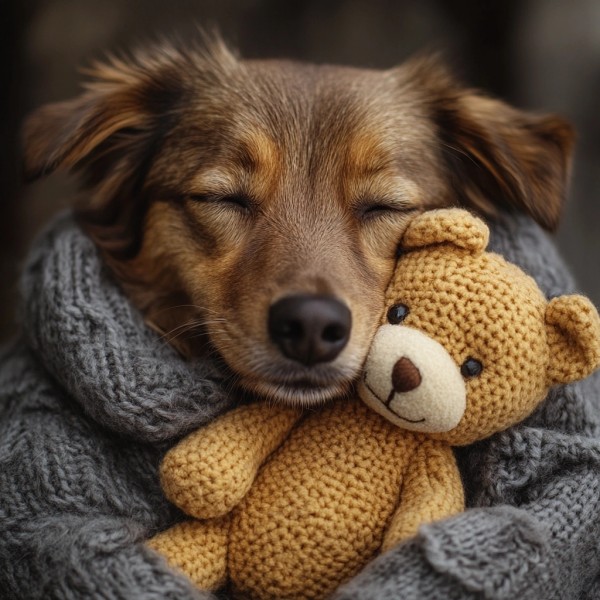
Sustainability and Eco-Friendly Options for Puppy Toys
Understanding the importance of sustainability and eco-friendliness in the selection of puppy toys is crucial for the health of your furry friend and the environment. Here are some key points to consider when choosing eco-conscious toys for your puppy:
1. Natural Fabrics and MaterialsMany traditional puppy toys are made from synthetic materials that can be harmful to both the puppy and the planet. Opting for toys crafted from natural fabrics like organic cotton, hemp, or bamboo is a great way to reduce your pet’s exposure to potentially toxic chemicals. These materials are not only gentle on your puppy’s skin but also biodegradable, making them a more sustainable choice.
2. Recycled Plastics and MetalsWhen it comes to durability, recycled plastics and metals can be just as effective as their non-recycled counterparts. Toys made from recycled materials not only help to conserve natural resources but also reduce waste. Look for toys that have been made using post-consumer recycled materials to ensure you’re making an environmentally responsible choice.
3. Responsible SourcingThe origin of the materials used in puppy toys can greatly impact their environmental footprint. Choose toys that are made with responsibly sourced materials, such as those that come from forests certified by organizations like the Forest Stewardship Council (FSC). This ensures that the materials were harvested in a way that supports sustainable forest management.
4. Non-Toxic Dyes and FinishesEven eco-friendly materials can be compromised by harmful dyes and finishes. Look for toys that are free from heavy metals, phthalates, and other toxic substances. Non-toxic, water-based dyes and finishes are better for your puppy’s health and the environment.
5. Energy-Efficient ProductionThe energy used in manufacturing toys can have a significant impact on the environment. Toys produced using renewable energy sources, such as wind or solar power, are a step in the right direction. Additionally, manufacturers that use energy-efficient production processes help to minimize their carbon footprint.
6. Minimalist DesignSimple, minimalist designs can often be more eco-friendly. Toys with fewer parts and a straightforward construction are not only easier to recycle but also less likely to contain small, removable pieces that could pose a choking hazard to your puppy.
7. End-of-Life ConsiderationsThink about the toy’s lifecycle. Some toys are designed to be easily taken apart for recycling or composting at the end of their useful life. Others may be made from materials that can be repurposed or used in creative ways once they’ve served their initial purpose.
8. Support Local and Small-Scale ProducersBuying from local producers or small-scale artisans can often be more sustainable. These businesses may use less packaging, have shorter transportation distances, and support local communities. Plus, you’ll often find unique, high-quality toys that align with your values.
9. Encourage Responsible ConsumptionEducate yourself and others about the importance of choosing eco-friendly toys. By setting an example and spreading the word, you can help shift the market towards more sustainable products.
10. Regularly Maintain and Rotate ToysEven eco-friendly toys can become less sustainable if they’re not properly cared for. Regularly inspect your puppy’s toys for signs of wear and tear, and rotate them to ensure your puppy gets the most out of each toy. This also helps to prolong the life of the toys, reducing the need for frequent replacements.
By considering these factors, you can make informed choices that not only provide your puppy with safe, engaging playtime but also contribute to a healthier planet. Remember, the best puppy toys are those that are fun, safe, and made with a conscience.
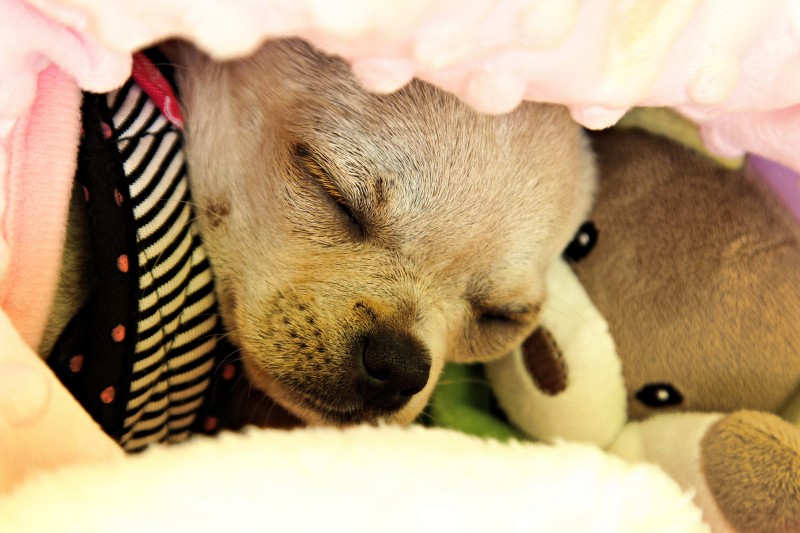
Customer Favorites: Real Reviews from Happy Pet Owners
In the world of puppy toys, it’s not just about entertaining your furry friend; it’s about their safety, well-being, and overall happiness. That’s why real reviews from happy pet owners are invaluable. Here are some testimonials that highlight the favorite puppy toys and the joy they bring to pets and their people:
“The Fetch-Me is a game-changer for my labrador, Max. He loves the texture and the way it moves, making playtime more engaging. I’ve seen a noticeable increase in his physical activity and mental stimulation.”
“My little beagle, Bella, was a picky eater, but she absolutely adores her plush chew toy. It’s sturdy enough for her to play with but soft enough to snuggle with after a long day of running around.”
“I bought the Puzzle Treat Dispenser for my terrier mix, Rocky, and it’s been a hit. Not only does he enjoy solving the puzzle, but it also keeps him busy while I’m at work. Plus, it’s great for hiding his treats.”
“I was worried about my golden retriever, Lily, chewing through her toys, but the Kibble Cruncher has been a game-changer. It’s durable and the sound of the kibble crunching is soothing for her.”
“My dog, Duke, has a habit of swallowing his toys, but the interactive ball with the squeaker inside is perfect. It’s easy for him to grip and the sound keeps him entertained for hours. I feel more secure knowing he can’t ingest it.”
“I have a senior dog, and the orthopedic bed with a plush toy attachment has been a godsend. It provides both comfort and entertainment, and the toy is easy for him to reach, which is great for his mobility.”
“The indestructible tug-of-war rope has become a staple in our home. My husky, Luna, loves to pull on it, and it’s held up to her rough play. It’s a great way for us to bond and for her to get the exercise she needs.”
“I was looking for a toy that could double as a training aid, and the treat-dispensing ball was exactly what I needed. My puppy, Leo, loves the challenge of getting his treats, and it helps reinforce good behavior.”
“My Yorkie, Daisy, is a tiny dynamo, and she loves her tiny plush dog toys. They’re the perfect size for her to carry around and they don’t get lost as easily as larger toys do. She’s adorable when she pretends to nurse them.”
“The chew-proof tug toy has been a lifesaver for me. My German shepherd, Otto, has a tendency to destroy everything in his path, but this toy is indestructible. It’s great for our play sessions and I don’t have to worry about him ingesting pieces.”
“I bought the interactive treat maze for my puppy, Charlie, and it’s been a hit. He loves trying to figure out how to get to his treats, and it’s a great way to keep his mind sharp. It’s also a bonding experience for us.”
These reviews showcase the variety of toys that have brought joy to pets and peace of mind to their owners. From durable chew toys to interactive puzzles, each toy has played a unique role in enhancing the quality of life for both pets and their people. It’s clear that when it comes to puppy toys, the satisfaction of the pet and the ease of mind for the owner are the ultimate measures of success.
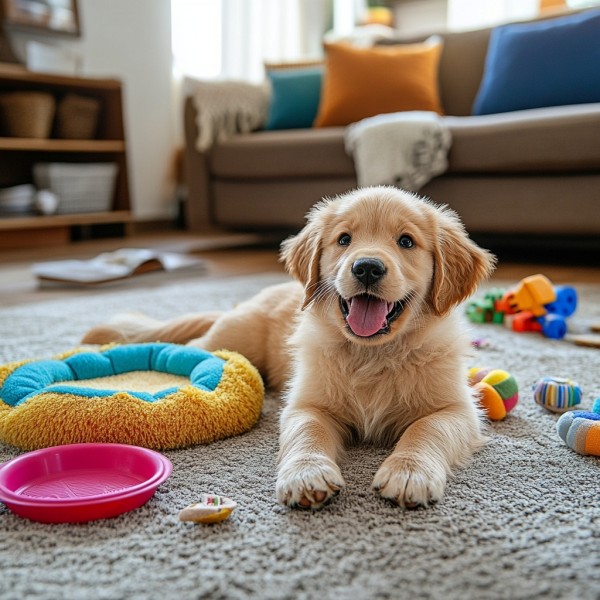
Final Tips for Finding the Best Puppy Home Toy for Your Needs
When selecting a puppy home toy, it’s crucial to consider the size of your furry friend. A toy that’s too small can be a choking hazard, while one that’s too large might not be engaging enough. Think about the breed and age of your puppy, as smaller breeds often prefer compact toys, while larger breeds might enjoy something with a bit more heft. The key is to find a balance that suits your puppy’s size and play style.
The durability of a puppy toy is another essential factor. Puppies are naturally curious and playful, which often means they’ll chew, tug, and toss their toys around. Look for toys made from sturdy materials like reinforced rubber, heavy-duty fabric, or non-toxic plastic that can withstand the rigors of play. Avoid toys with small parts that can easily break off and become a swallowing risk.
Interactive features can greatly enhance your puppy’s playtime. Toys that make noise, move, or light up can stimulate your puppy’s senses and encourage more engaging play. Puzzle toys that require your puppy to figure out how to get treats out can also help stimulate their cognitive development. Consider what kind of interaction your puppy enjoys and choose a toy that fits that preference.
Durability isn’t just about the material; it also relates to the construction of the toy. Look for stitching that’s strong and secure, especially if the toy has flaps or holes that your puppy might be tempted to chew on. A well-constructed toy will last longer and reduce the risk of pieces breaking off.
The age of your puppy is a critical consideration. Puppies under three months old need soft, gentle toys that won’t damage their developing teeth. Toys for older puppies should be more durable and stimulating to match their growing energy levels and curiosity. For instance, teething toys are perfect for younger puppies, while older puppies might enjoy toys that encourage fetching or tug-of-war.
The size of the toy is as important as its durability. A toy that’s too small could be a choking hazard, and one that’s too large may not be interesting enough for your puppy. Make sure the toy is proportionate to your puppy’s size; it should be something they can hold comfortably and manipulate with their mouth.
The right toy can also help with your puppy’s training. For example, a toy with a handle can be used to encourage your puppy to come when called or to teach them not to bite. Toys that can be filled with treats can be used to reinforce good behavior, such as sitting or staying.
The type of play your puppy prefers can guide your choice of toy. Some dogs love to chase and fetch, so a ball or a frisbee might be the perfect choice. Others might be more interested in toys that they can push or pull, like a wagging tail or a tug toy. Observing your puppy’s play habits can help you select a toy that they’ll be excited to use every day.
Safety should always be top of mind when choosing a puppy toy. Ensure that all parts of the toy are securely attached and that there are no sharp edges or small parts that could come loose and pose a risk. Non-toxic materials are a must, as your puppy will likely chew on their toy, and you want to avoid any potential health hazards.
Consider your puppy’s energy level. A high-energy puppy might need a toy that can withstand a lot of wear and tear, while a more laid-back dog might enjoy a quieter, less active toy. The right toy can help channel your puppy’s energy in a positive way and prevent destructive behavior.
The texture of the toy can also be an important factor. Some puppies prefer the feel of a certain material or texture, which can make playtime more enjoyable for them. Soft, plush toys can be comforting for some dogs, while others might prefer the feel of rubber or hard plastic.
Lastly, think about the versatility of the toy. A toy that can be used for multiple types of play can be a great investment. For instance, a toy that can be thrown for fetch and then used for tug-of-war can offer a variety of play experiences in one.
Remember, the best puppy home toy is one that your puppy loves and that meets their needs for play, safety, and stimulation. With a little thought and observation, you can find the perfect toy to enhance your puppy’s life and make playtime a delightful part of your day together.

